A Placemaking Journal
The Science is In: The healthiest neighborhoods are both walkable and green
Most of us, most of the time, don’t make much connection between place – the neighborhoods where we live, work, and play – and our health. Not unless we’re thinking of such obvious local health concerns as an outbreak of infectious disease in the community, serious levels of pollution or toxicity nearby, or perhaps about local health care services and facilities. Absent those kinds of circumstances, we tend to take our neighborhoods for granted when it comes to health. But we shouldn’t, because there is a rapidly growing body of evidence demonstrating that the shape and character of our communities matters a great deal to our health.
A lot has already been written about the subject, including by some of us here at PlaceMakers. There was a terrific lengthy report on place and health published in December 2016 by our friends at the Project for Public Spaces (PPS) (and nicely described by my colleague Hazel Borys here). I recommend that report, especially for its concise but excellent, issue-by-issue literature reviews.
But I am returning to these matters today because there is compelling new research, from a variety of medical and other scientific sources, about what makes a neighborhood healthy. And, while that research certainly reinforces what smart growth and urbanist advocates have long believed – that walkable places, in particular, make a significant contribution to human health – it also establishes strongly that, among neighborhood characteristics, walkability alone is not enough. To be truly healthy, especially in cities, we also need nature in our communities. And that is something that, in my opinion, is not commanding enough time and energy from city builders and advocates.
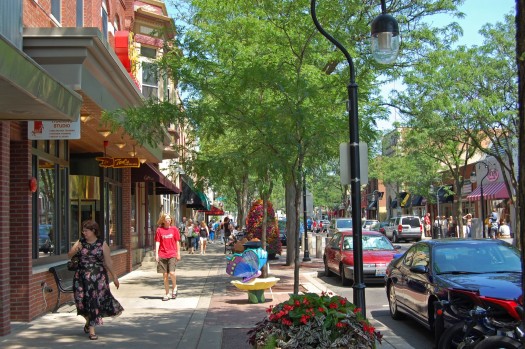
Before I get into the new research on neighborhood walkability and nature, allow me to set some broader context:
As a nation we Americans enjoy reasonably good health in many ways. But there is ample reason for concern. Last year US life expectancy declined for the second year in a row, the first multiyear decline since the early 1960s. The PPS report indicates that chronic conditions such as heart disease, diabetes, respiratory ailments, and cancer affect half of American adults and, remarkably, that “only about 17 percent of US adults are considered to be in a state of optimal mental health.” Among mental health ailments, depression – the leading cause of disability worldwide – affects 26 percent of American adults, according to the report, and is also “connected to elevated risks for poor physical health.”
Moreover, obesity rates have been climbing for some time and are now shockingly high: about 40 percent of American adults are now considered obese, up from about 30 percent two decades ago. Even young children are affected: 13.9 percent of children from two to five years old are now classified as obese.
Health risks in cities
City living can alleviate some of these conditions but tends to exacerbate others. On the good side, rates of cardiovascular health are generally more favorable in cities than in rural areas. (More on that below.) But, on the bad side, city residents also encounter higher concentrations of air pollution and, perhaps as a result, their risk of respiratory disease may be greater.
A study published last year of 3509 Canadian children living in both urban and rural areas, for example, found asthma prevalence to be generally higher in urban locations with some indication that asthma incidence tends to rise as we move along a rural-to-urban gradient. This is consistent with previous research from the UK on adult asthma [link requires log-in]. (But research from Johns Hopkins published in 2015 found that higher rates of kids’ asthma in American inner-city neighborhoods could be “explained by demographic factors,” especially poverty, rather than by living in an urban neighborhood.)
Beyond asthma, scientific opinion on the deleterious effects of urban noise pollution is unequivocal. Writing in The Guardian in March 2018, reporter Matthew Keegan characterized some of those effects:
“The World Health Organization (WHO) has described noise pollution as an underestimated threat that can cause hearing loss, cardiovascular problems, cognitive impairment, stress and depression . . .
“A recent study by experts at the American College of Cardiology linked noise pollution to increased cardiovascular problems (high blood pressure, heart attacks, stroke, coronary heart disease) through the body’s stress mediated response – resulting in the release of the stress hormone cortisol, which in turn damages blood vessels.”
The study also found that, on average, a person living in one of the loudest cities in the study has hearing loss equivalent to that of someone 10-20 years older.
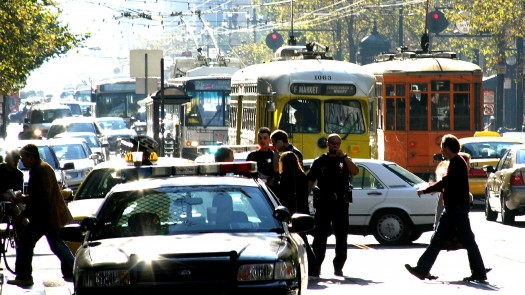
How much noise does it take to cause health problems? Cardiovascular effects begin to be seen after exposure to sounds at 65 decibels (dB), according to research I detail more fully in an earlier article. That’s somewhere between the levels experienced in a typical large office and those caused by freeway traffic. Depending on the duration of exposure, hearing impairment can begin at around 85 dB, roughly equivalent to a noisy restaurant or heavy traffic. Noise levels on New York City subway platforms have been measured at 108 dB, rising to 112 dB inside the cars.
Cities and mental illness
When it comes to mental illness, noise is only one of the factors that contribute to higher levels of disease among city dwellers. Cities can be exciting; they can strengthen social opportunities and economic productivity. But, simply put, city living can also be stressful, and that part is not good for us.
In a literature review conducted as part of a study published earlier this year and examining the effects of nature on mood, the authors summarized the state of the literature on the subject:
“People who live in urban environments are at higher risk of a range of mental-health issues, including depression, generalized anxiety disorders, psychosis, and addictive disorders. Crucially, the observation of a dose-dependent effect provides support for a causal relationship, rather than a mere association, between urban living and risk for mental illness. Further evidence for this causal relationship comes from the finding that the adverse impact of urban living can be reversible, with some categories of patients showing improved clinical outcomes after moving from urban to rural environments.” [Citations omitted.]
These findings are consistent with a sophisticated, quantitative “meta-analysis” of urban and rural differences in mental health reflected in twenty “studies of higher methodological quality with adjustment for important confounders” out of 110 studies reviewed by researchers based in Amsterdam. Synthesizing data from the twenty most sophisticated studies, all from relatively high-income countries, the researchers found the incidence of mood disorders (mostly depression) was 39 percent higher and the incidence of anxiety disorders was 21 percent higher in cities than in rural areas. Significant differences remained even when the data were controlled for other factors including age, gender, marital status, social class, and ethnicity. (The researchers looked for but did not, however, find a significant difference between urban and rural residents with regard to substance abuse disorders.)
As we would expect, all these problems are exacerbated in low-income neighborhoods. People require treatment for asthma, diabetes, and cardiovascular disease twice as often in poor neighborhoods as they do in more affluent communities, reports Kevin Barnett in Shelterforce. And those who live in low-income neighborhoods undergoing change, writes Erin Schumaker in HuffPost, face additional negative health impacts from construction – such as noise, particle pollution, lead exposure, air toxins, and stress – as well as from anxiety over whether the affordability of their homes and the support of longstanding community social networks will remain stable.
But there’s good news, too
I suppose all this paints a somewhat negative portrait of urban living. But, as a large and growing body of research demonstrates, city environments can also be very supportive of health if we get the neighborhoods right. And there is no better neighborhood characteristic to start with on this score than walkability.
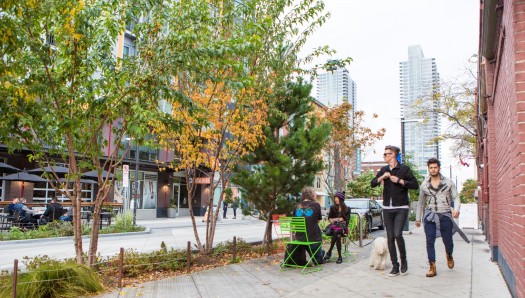
For years now, my favorite study linking walkable neighborhoods and health has been a massive 2008 study out of Utah. Using driver’s license data, researchers collected height, weight, and residential addresses of 453,927 adults living in Salt Lake County, correlating those data with walkability characteristics of the subjects’ home neighborhoods. Here’s what they found, according to a summary posted on WebMD:
“Based upon the analysis, a man of average height and weight who lived in the most walkable neighborhood in Salt Lake County would be expected to weigh an average of 10 pounds less than a man living in the least walkable neighborhood. For women, the difference would be 6 pounds.”
(You can find the full study [pdf] here.)
I will get into the definition of “walkable” in a minute, but first I want to tell you about a newer and very important large study. If residents of walkable neighborhoods weigh less than residents of unwalkable ones, we would expect to see cardiovascular health differences between the two, right? And that is exactly what the largest-ever study (429,000 subjects in the UK) of the relationship between neighborhood walkability and blood pressure, published in February 2018, has found.
In particular, the researchers, led by Dr. Chinmoy Sarkar of the University of Hong Kong, found that neighborhood walkability, based on a composite index of metrics such as residential and commercial density, the availability of public transit, amount of pedestrian activity, and proximity to attractive destinations, was associated with lower systolic blood pressure, lower diastolic blood pressure, and lower incidence of hypertension.
Attributes of walkable neighborhoods
So, what makes a walkable neighborhood? The popular web-based app Walk Score includes among its measures such factors as distance from a given address or neighborhood to amenities such as shops, parks, schools, and transit; population density; and street metrics such as block length and intersection density. (Shorter blocks and more intersections tend to facilitate short cuts and reduce, on average, walking time and distance to destinations.) Walk Score calculates a score from zero to 100 for each location, rating any result above 70 as “very walkable”; a neighborhood scoring 90 or above is considered a “walker’s paradise.”
A literature review in the PPS report cited above found that “80 percent of the 46 relevant studies [on neighborhood attributes that encourage walking] identified the presence and proximity of local stores, services, and transit stops to be most strongly associated with rates of transportation walking, while 50 percent noted the importance of having sidewalks and streets that are continuously connected.” In 2016, an international study of 6822 adults in 14 cities (in ten countries; in the US, Baltimore and Seattle were included), each wearing an electronic exercise monitor, identified four statistically significant land use characteristics associated with moderate to vigorous levels of physical activity: residential density, intersection density, public transit density, and access to parks within half a kilometer. (I described the study in more detail in a previous article.)
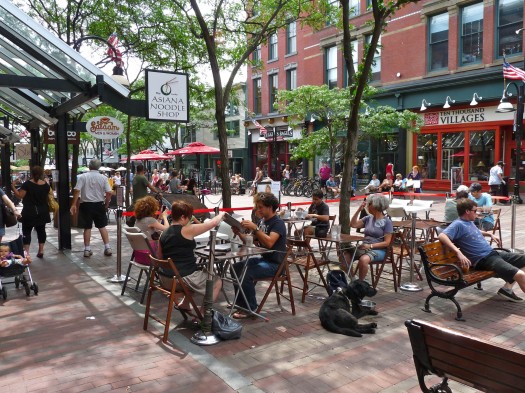
People also need to feel that a neighborhood is safe, including from motor vehicle traffic, in order to walk in it voluntarily. The PPS report continues:
“A 2015 review by Active Living Research found that perceived safety from traffic (as well as crime) is one of the most important factors attracting people to places and encouraging walking. This perception of safety is also associated with the presence of sidewalks, footpaths, pedestrian infrastructure, street connectivity, controlled intersections, clearly marked street crossings, and reduced traffic speed and volume.”
But another massive and recent (October 2017) study led by Dr. Chinmoy’s team and using the same UK database as the blood pressure study found that residential density alone, independent of other factors, was associated with reductions in body fat and obesity. The effect was seen beginning at 1800 residential units per square kilometer (roughly seven units per acre) and was more pronounced beginning at 3200 units per square kilometer (about 13 units per acre). (Below the threshold of 1800 units per square kilometer, increasing density was not helpful.)
I find it significant that this study of over 400,000 adults concludes that these favorable health outcomes are found beginning at what most urbanists would consider to be moderate, rather than high, residential densities. (Moderate densities have also been found adequate to produce beneficial environmental effects such as reductions in per-capita automobile emissions and stormwater runoff.) While higher densities are obviously appropriate in many urban situations, moderate densities are appropriate in others and sometimes more popular with a large share of the American market.
What about city nature?
These strong associations prompt the question, “don’t we know enough?’ As one exasperated friend put it when I mentioned that I was researching this article, “shouldn’t we just do it?”
Well, yes and no. On the one hand, we of course should be making sure that, where neighborhoods are currently walkable, they are properly invested. When we build new neighborhoods, we should make them walkable. And, when opportunities arise, we should retrofit older ones to improve their walkability.
But, on the other hand, while the research on walkability is getting stronger, so is the research connecting city nature and health. (My PlaceMakers colleagues Hazel Borys and Susan Henderson have each written eloquently about the subject.)
In general, as a broader community of people who care about healthy places, I believe we don’t think often enough, or deeply enough, about how best to put urban walkability and nature together: many nature advocates don’t think much about cities, and many urban advocates don’t think much about nature. This must change, in my opinion: I believe we must work more diligently on both walkability and city nature. Indeed, as the studies I will discuss below demonstrate, for some folks it may be a matter of life and death.
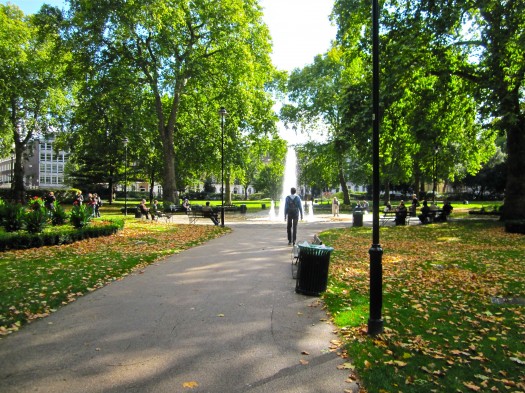
Consider, for example, a newly published (December 2017) study in the highly respected British medical journal The Lancet and summarized nicely by Stephen Schmidt in Science Friday: The researchers assembled 135 subjects, all aged 60 or older, equally divided among (1) those who were considered healthy, (2) those who had chronic obstructive pulmonary disease (COPD), and (3) those who had ischemic heart disease (in which a blockage in the coronary arteries reduces blood supply to the heart muscle). The participants were then randomly assigned to walk for two hours either along London’s Oxford Street, one of the city’s liveliest, or in the city’s bucolic Hyde Park. The researchers measured heart and lung functions both before and after the exercise.
The subjects who walked in the park, whether healthy or with chronic maladies, showed significant improvement in pulmonary and cardiovascular function; those who walked along Oxford Street showed negative effects in those indicators. The researchers believe that the reason for the difference was the increased exposure to air pollutants, especially nitrogen dioxide and ultrafine particles, along Oxford Street. The researchers, led by Dr. Rudy Sinharay, Imperial College London, concluded:
“Our findings suggest that healthy people, as well as those with chronic cardiorespiratory disorders, should minimize walking on streets with high levels of pollution because this curtails or even reverses the cardiorespiratory benefits of exercise. Instead, walking exercise should be enjoyed in urban green space areas away from high density traffic.”
City nature and longevity
Or, consider two very large and very well-controlled recent studies, each suggesting that residents of greener neighborhoods live longer than those who don’t. In the largest and most recent (October 2017) study, Canadian researchers led by Dr. Dan Crouse of the University of New Brunswick examined a huge database of “approximately 1,256,000 individuals,” a nationally representative sample from the Canadian Census representing residents of Canada’s 30 largest metro areas. Census information was compared to tax return data (to control for socioeconomic factors), the Canadian mortality database, and a now-standardized, satellite-derived measure of neighborhood greenness called the “Normalized Difference Vegetation Index (NDVI).”
Examining a decade’s worth of data from this cohort, the authors found “decreased risks of mortality in the range of 8–12 percent from all causes of death examined with increased greenness around participants’ residence,” when neighborhood greenness was measured within 250 meters and 500 meters of the residence. The greatest beneficial effects of a greener neighborhood were found for respiratory diseases. The researchers noted that “controlling for exposures to ambient nitrogen dioxide strengthened the associations substantially.”
These results are consistent with a 2016 study examining a database of 106,630 women participating in the US-based National Nurses’ Health Study over an eight-year period in which 8,604 deaths occurred. Health, mortality, and socioeconomic data were compared to NDVI measurements around each subject’s residence within 250 and 1250 meters (1250 meters is about a 15-minute walk).
Women in the highest quintile of greenness had significantly lower rates of mortality, especially from respiratory disease and cancer. There was a 34% reduction in respiratory mortality for highest-quintile greenness compared to lowest quintile. The results were significant at both distances but, as we would expect, strongest within 250 meters.
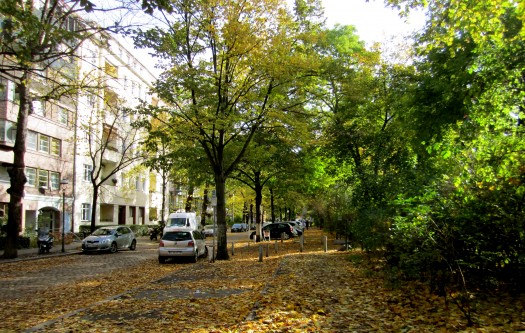
Before leaving the subject of green neighborhoods and physical health, I’ll mention two more studies, both providing specific findings with respect to trees. The first, led from the University of Exeter and published late last year, examined more than 650,000 serious asthma attacks leading to emergency hospitalizations across 26,000 urban neighborhoods in England over a 15 year period. The researchers looked at trees and other forms of green space and gardens within the patients’ neighborhoods, along with air pollution levels, and found that trees had a particularly strong association with fewer emergency asthma cases from polluted neighborhoods but that other kinds of greenery did not. In less polluted neighborhoods, though, it was the opposite: gardens and green spaces were associated with lower levels of asthma emergencies, but trees were not. (There’s a good summary of this study in Science Daily.)
The second study examined self-reported health information from 31,109 residents of Toronto, correlating questionnaire responses with local vegetation data and found that “people who live in neighborhoods with a higher density of trees on their streets report significantly higher health perception and significantly less cardio-metabolic conditions (controlling for socio-economic and demographic factors).” Significantly, these associations were limited to street trees and were not found for tree density “in areas other than beside the streets and along local roads.” The authors suggest that street trees may have a particularly beneficial effect because they “generally are those that [residents] may have the most contact (visual or presence) with” or that they may remove more pollutants from motor vehicle traffic along the streets.
City nature and mental health
While the associations linking neighborhood nature to physical health are rapidly strengthening, the science demonstrating the benefits of nature to mental health has long been established. As noted above, without nature the stresses of city living can be generally deleterious to mental health, triggering higher rates of anxiety and depression, among other disorders, in city residents than in people who live in more tranquil settings. But those negative effects can be overcome with city nature. Here’s an excerpt from a recent literature review on the subject, conducted for a study appearing in the Oxford University publication BioScience:
“Although city dwellers are at higher risk of mental illness, an increasing body of evidence suggests that natural features within the built environment can counteract the detrimental effects of urban living and even promote mental health. For example, living in urban areas with natural features such as trees, gardens, parks, birds, and water is associated with higher levels of mental well-being and reduced incidence of chronic mental illness.” [Citations omitted.]
In addition, while researching my 2014 book People Habitat, I came across a large Dutch study on the effects of neighborhoods with and without green spaces on mental health, reported in a monograph published by the National Recreation and Park Association in 2010 [pdf]. It found a direct correlation between mental health effects and the proximity of parks:
“Scientists in the Netherlands examined the prevalence of anxiety disorders in more than 345,000 residents and found that people who lived in residential areas with the least green spaces had a 44 percent higher rate of physician-diagnosed anxiety disorders than people who lived in the greenest residential areas. . .
“Time spent in the lushness of green environments also reduces sadness and depression. In the Dutch study, the prevalence of physician-diagnosed depression was 33 percent higher in the residential areas with the fewest green spaces, compared to the neighborhoods with the most.”
The NRPA report even cites studies finding lower levels of aggression, violence and crime in Chicago housing projects with views of vegetation than in those without.
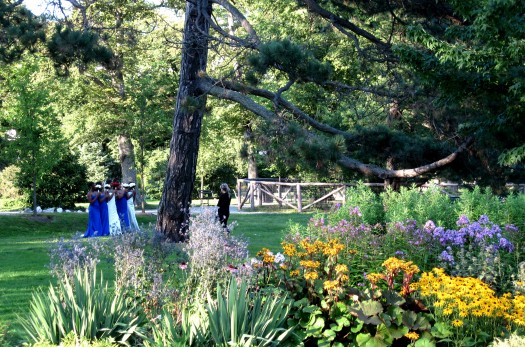
One oft-cited benefit of neighborhood green spaces is that they tend to bring us together and can reduce loneliness. A survey of Canadians aged 55 and older, published last year, looked specifically at loneliness and found that “the combined effects of living near a park and going to parks frequently were about as good at reducing loneliness as being married.” For purposes of comparison, the effects of living near and frequently visiting a library were also found quite beneficial in reducing loneliness, “but not quite as substantial as the benefits of living near parks.” The same was true of living near “high quality” public transit. The findings were unaffected by socio-economic status.
Nuances in the research
Some interesting nuances have emerged from this body of research in the last decade. For example, there is now empirical evidence that the benefits of nature are dose-dependent: people who make long visits (30 minutes or more) to green spaces have lower rates of depression and high blood pressure, and engage in more physical activity, than those who make only short visits; people who visit more frequently exhibit greater social cohesion and engage in more physical activity than those who visit less.
And a 2014 study showed that people who move from a less green neighborhood to a greener one experienced an immediate improvement in mental health that was sustained for at least 3 years after they moved. The findings held up even after the authors adjusted their data to remove effects from other factors likely to affect mental health over time – such as income, employment and education – along with factors related to personality. I believe this finding is critical for urbanists to understand, because traditionally in the US, those people who seek the intuitive (and now well documented) stress-relieving benefits of nature have fled cities in order to find them in their suburban backyards and enclaves. We need to green our city neighborhoods so that people who sensibly seek these benefits can find them inside walkable urban settings.
We also would do well to green city schoolyards. Schools in green settings have been associated with improved cognitive development in elementary school children, better academic performance from sixth graders, and better academic performance among high school kids [pdf]. Significantly, the high school study – which investigated 101 schools in Michigan – found that the greatest benefit was associated with the presence of trees and shrubs very close to the school; large expanses of visible landscape lacking in natural features, such as large areas of lawn or nearby farmlands, actually had a negative association with test scores, intentions to attend college, and college plans.
The quality of nearby nature does seem to matter. Consistent with the latter finding, but moving beyond the realm of schools, a British study found that the psychological benefits of green space increase with the biodiversity of its vegetation. In other words, it’s not as beneficial to our mental health to have access to a simple plot of grass or otherwise barren patch of land as it is to have access to green space with more diverse natural or landscaped features.
In a well-articulated and -referenced article in The Conversation, Zoe Myers of the University of Western Australia put it this way:
“Many urban parks and green spaces – particularly in residential areas – are unimaginative, repetitive and lack basic elements to evoke these references to nature. Nor do they encourage walking or enjoying the natural elements for any length of time.
“For example, paths without shade or protection do not encourage walks long enough to achieve benefits. A lack of landscape diversity does little to activate fascination or interest, and fails to offer incentive to visit them, especially given the ways in which parks can be separated from their surroundings. . .
“Compare this to urban areas that employ creative uses of incidental nature to capture attention and offer genuine interaction.
“Successful parks and urban green spaces encourage us to linger, to rest, to walk for longer. That, in turn, provides the time to maximize restorative mental benefits.”
Perhaps this is why botanical gardens, by their nature biologically complex, have been found to have restorative effects on visitors, who report generally high rates of physical and psychological benefits and of subjective well-being during visits.
So, what to do?
Of course, in an urban setting, we can and should benefit not just from a diversity of species but also from a diversity of ways of presenting – or at least evoking – nature. My PlaceMakers colleague Susan Henderson has written that “I would advocate for a careful integration of nature on all scales of the city, from the window box to the park. At the neighborhood scale this may include squares, plazas, greens, playgrounds, parks, community food gardens, healing gardens, and parklets.” And to that very good list I would add living walls, green streets, fountains, green roofs, street trees, street-facing gardens in front of houses and other buildings, and probably a whole lot more that Susan and I haven’t thought of.
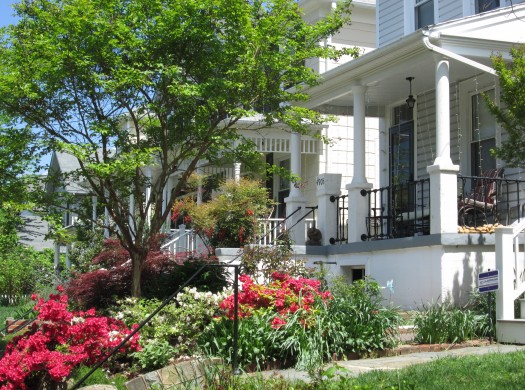
As another colleague, Hazel Borys, has put it, “when nature is integrated into urbanism, wellness surges.” So, let’s start incorporating elements of nature into municipal planning, and make sure that urban land use policy and zoning – which already is trending toward walkability and city density – does not neglect steps we also need to take to make our communities visibly green. Above all, let’s make sure we don’t chase people who seek the benefits of nature away from cities.
The case for putting urbanity and nature closer together is only going to get stronger. To this end, I am very encouraged by a report from Kat Friedrich in GreenBiz (June 2017), noting that health care giant Kaiser Permanente is partnering with the University of Illinois and a consortium of government, nonprofit, and corporate entities on a massive study of its 4 million subscribers in northern California to determine if the amount of greenness near their homes (in three categories: street trees; park spaces; and private yards), as revealed by satellite imagery, makes a measurable difference in subscribers’ health.
Friedrich quotes researcher Matt Browning of the University of Illinois:
“We’re expecting a 1:10 to 1:100 ratio for investment in urban green space with regard to reduction of health care expenditures. This means that investing $1 in planting and maintaining urban trees would reduce health care costs nearby by $10 to $100.”
If realized, such a finding would be impressive, to say the least. Moreover, according to the story, the researchers want to test the additional hypothesis that adding green spaces in low-income communities may have a particularly high financial impact because poor neighborhoods currently tend to be nature-deficient.
I am also impressed and encouraged by a consortium of diverse partners in Europe – some 32 institutions from 18 countries – that is working on retrofitting more “nature-based solutions” into an initial group of eleven European cities. Funded in part with seed money from the European Commission and called Connecting Nature, the program seeks to incorporate more street trees, parks and gardens, green roofs and walls, green infrastructure, and the like into the lead cities, to measure the results, to learn lessons along the way, and to spread the strategies to additional cities over time. (The description on the website reminds me in some ways of the ambitious and promising City Energy Project in the US, which seeks to improve the energy efficiency of buildings in twenty American cities.)
Let’s wish them well, and do more of the same here in North America.
–Kaid Benfield
If PlaceShakers is our soapbox, our Facebook page is where we step down, grab a drink and enjoy a little conversation. Looking for a heads-up on the latest community-building news and perspective from around the web? Click through and “Like” us and we’ll keep you in the loop.










